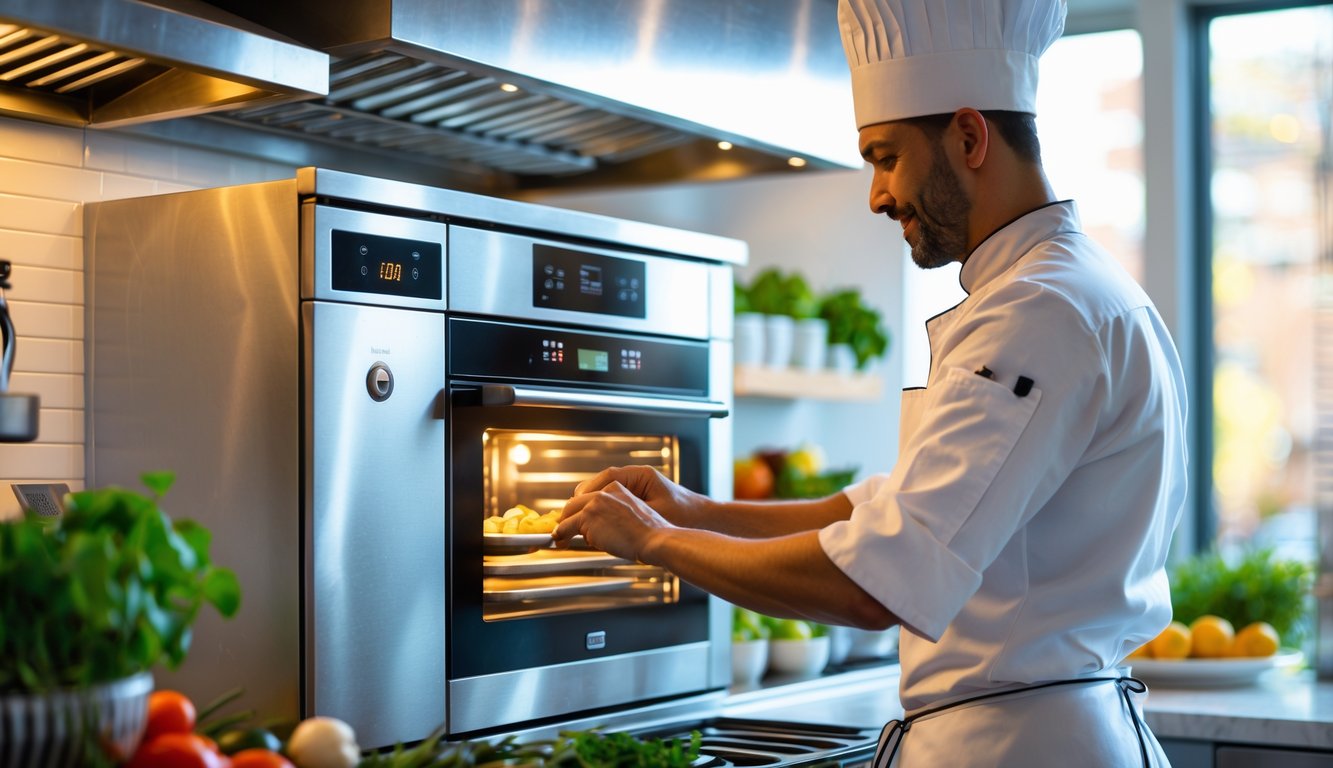
Choosing the Right Appliance for Your Cooking Needs
Half the time I walk into the kitchen, I just want eggs and toast, but suddenly I’m juggling four gadgets and wondering why I own any of them. Picking the right appliance? Good luck. Speed matters, but so does flexibility, and don’t even talk to me about sticker shock on ovens.
Personalization and Adaptability
Last week I almost burned rice because my ancient stove can’t simmer. All these big-name chefs rave about precision, but copying that at home? Not so easy. Pro kitchens obsess over ultra-precise controls—Ludo Lefebvre loves his induction hobs, and I tried to copy him, failed, and realized adaptability is everything.
Meal prep only works if your appliances can keep up. One day you’re roasting, the next you’re microwaving quinoa because traffic was a nightmare. Gluten-free? Good luck—most gadgets haven’t been tested for that. I read in this advice guide that even fridge drawers matter: crisper settings, humidity controls, multi-zone cookers. Why can’t a new oven just remember my broil setting? Programmable presets are lifesavers, but nobody talks about them until you forget your favorite meal.
Balancing Features and Budget
Okay, real talk: “Just buy the best you can afford.” Sure, thanks, incredibly helpful. What does that even mean? My neighbor once dropped a fortune on this oven with more settings than a spaceship, and then—no joke—used only two because the manual was basically a novella written in some lost dialect of legalese. I mean, does anyone actually use the bluetooth thermometer? Or the rotisserie thing? I get sucked in by the bells and whistles, too, but then I’m stuck with a bunch of random features I never touch. Meanwhile, the one thing I actually need—like a burner that doesn’t randomly go nuclear—somehow never makes the cut.
Budgeting? In theory, it’s a breeze. Pick a number, stick to it, and done. But then I start listing “must-haves” and “nice-to-haves,” and suddenly I’m staring at a spreadsheet and questioning my life choices. Homebuilding says to set a realistic price limit, but what’s realistic when a “mid-range” appliance costs more because, what, the handle is shinier? If you’re cooking for a crowd, sure, get a bigger oven, but don’t fall for the idea that a higher price tag magically makes your food taste better. I’ve made better chili in a $40 slow cooker than in some $900 kitchen robot. Maybe the real trick is buying stuff you’ll actually use, even if it means skipping the built-in espresso thing that’ll just gather dust and guilt.
Frequently Asked Questions
Why is convection cooking always on my mind? Every time I ruin cookies, I remember I forgot the fan. Not every oven lets you mess with air flow, and then I’m texting my friend who bakes for a living, asking why my croissants taste like sadness. It’s not about the pro ovens being wildly expensive—it’s just that I keep forgetting about the features that actually matter.
What’s the game-changing feature on kitchen appliances that professional chefs swear by?
You want the truth? It’s not gas burners or some secret chef-only setting. It’s that convection fan. I’ve seen actual chefs—flour everywhere—swear it’s the only thing that matters (and this breakdown seems to agree, which is weirdly reassuring). People keep repeating that gas is king, but honestly, I’ve incinerated enough bread to know it’s not about the fuel at all.
How does this specific feature in appliances enhance the cooking experience?
That fan just blasts hot air everywhere. Suddenly, crusts get crispy before you can blink, and the roast chicken doesn’t turn into cardboard. I once left my oven on convection mode for, like, weeks without realizing. Everything—fries, bread, whatever—came out looking way less sad and pale. This food science professor I know claims airflow cuts down on weird browning problems by 30%. I mean, maybe? I’m not measuring, but it feels right.
Can you tell me which appliances include this feature that chefs love?
Ovens, obviously. But it’s not just the fancy ones. Even some cheap toaster ovens have convection fans now. My last apartment’s oven had it and I didn’t even notice until I moved out. Steam ovens try to get in on the action, but it’s not really the same. You can see more random features here, which is kind of embarrassing because half the time, the stuff in “pro” kitchens is just regular stuff with a bigger price tag.
Is this chef-approved appliance feature something a home cook can benefit from too?
I used to think “chef-approved” meant you needed to take out a loan and read a manual thicker than a phone book. Then I borrowed my neighbor’s convection oven (long story, they thought I broke it, I didn’t), and my scones were suddenly amazing. So yeah, it’s not just for pros. Regular people get the perks—less tray spinning, fewer burned edges, and apparently everyone catches on fast.
What are some lesser-known benefits of this particular appliance feature?
You know what’s underrated? Not having to hover over soufflés like a nervous parent. I actually cleaned the kitchen while stuff baked, which never happens. Pies don’t bubble over as much, and bread rises like it’s supposed to—at least, sometimes. I read somewhere that convection helps with humidity, but honestly, who knows? My leftovers are less rubbery, which is nice, but I can’t explain why.
How can I get the most out of this feature in my own kitchen for top-notch culinary creations?
Okay, so—does anyone actually remember which pans work with convection? Because I don’t. I just grab whatever’s not in the sink, but apparently those perforated sheets are supposed to be better? Not that I care, but every time I use grandma’s ancient glass dish, the bottoms come out sad and floppy. Preheating? Ugh, yeah, I know, I always try to skip it and then regret everything. Ignore the guilt-trip about “energy saver” modes—just crank it up and, honestly, start checking stuff way earlier than any recipe says. Like, I’m talking 20% less time, minimum. I learned this the hard way—eggplant parmesan, totally incinerated. Someone online claims you should lower the oven temp by 25°F. Does that even work? I never do it, unless I’m making meringues or something weird. Oh, and if the fan starts sounding like a jet engine’s about to take off, don’t panic. It’s probably just caked in dust. No one ever tells you to clean that. Why is that?



